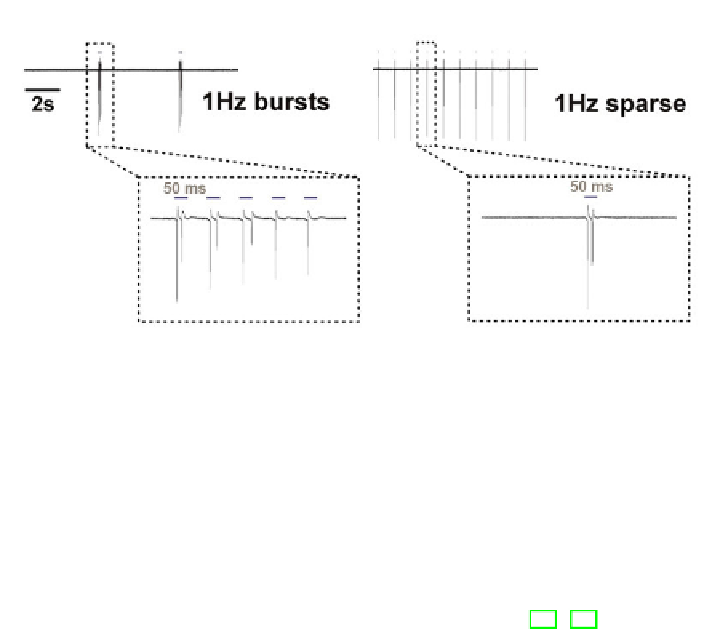Information Technology Reference
In-Depth Information
Importantly the presence of retinal is crucial for ChR2 to function properly.
When expressed in the mammalian brain exogenous delivery of its cofactor is not
required due to the presence of endogenous retinoids. In cultures this problem is
overcome by the presence of B-27 in the culture medium which contains retinyl
acetate. All these properties of ChR2 make it an ideal candidate for use in long
term in vivo stimulation (Fig 2).
Fig. 2.
Example on-cell configuration recordings from a ChR2+ve neuron during 1Hz
burst (left) and 1Hz sparse (right) LED photostimulation. Modified from Grubb and
Burrone 2010 [9].
3 From Probe to Therapeutic Tool
For ChR2 to make the transition from probe to therapeutic tool it will have
to meet certain requirements. Firstly, it must not be toxic or interefere with
normal molecular mechanisms. Most papers in which ChR2 has been expressed
in exciteable cells have not reported any adverse effects [22] [24]. However, one
possible complication that might arise from chronic photostimulations necessary
for lasting rehabilitation which must be addressed is phototoxicity in response to
constant light exposure. There are reports that blue light induces mitochondrial
DNA damage through the production of free radicals in epithelial cells after 3
hours of light exposure [25]. Long term tests will have to be carried out to
ensure that in vivo stimulations can withstand such pressures through naturally
occuring antioxidants. Secondly it needs to be stably expressed and functional
in the order of years to decades. So far ChR2 has been expressed in vivo in
the primate cortex and hippocampus for several weeks [26] and activated for
more than 2 days in hippocampal cultures [9] and 24hrs in organotypic slices
[10]. Thirdly a suitable mechanism of ChR2 delivery must be selected. Primate-
appropriate viral vectors with human promoters have already been tested with
success [26]. Forthly, appropriate means of light delivery must be selected. This
will partly depend on the area and depth within the brain or peripheral sys-
tem which requires stimulation. Effected areas closer to the surface of the brain





Search WWH ::

Custom Search